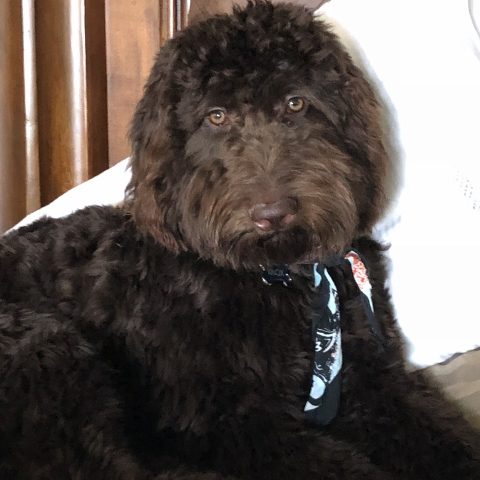The first week you and your new doodle puppy spend together is exhilarating, certainly, but it may also be unnerving.
Make the transition easier on both of you by doing a little advance planning.
Before your new pup arrives:
1. Have a family pow-wow.
A dog is a big commitment, so before you take the plunge, make sure you’re all together on wanting this newest member of the family. Then decide who’s going to be the primary caretaker–otherwise you’ll spend lots of time arguing while your new dog stares at his empty food bowl. To avoid confusing the pup, hammer out the house rules ahead of time (will the dog be allowed on the bed? On the couch? Where will the dog sleep? Are any rooms of the house permanently off-limits?).
2. Stock up on the right supplies.
Buy some of the basics ahead of time, so you both and your dog can settle in without too many mad dashes to the store. Here’s what you’ll need:
- crate
- food and water bowls
- food and maybe some treats for training. You will receive a 5-lb bag of your puppy’s current kibble in your puppy pack. Remember that a sudden switch in diet can upset his stomach.
- collar and leash
- bed
- toys, especially chew toys
- possibly some baby gates to block off sections of your house
3. Prepare your house.
This requires a little more work if you’re getting a puppy, since they can be champion chewers and have a knack for getting into things they shouldn’t. But no matter what your dog’s age, you’ll want to do some organizing ahead of time. Create a temporary, gated-off living space for your dog or pup, where she can’t damage your belongings or eat something that will make her sick. She’ll stay in this area whenever you’re not with her to prevent her from having house training accidents.
Pick a room that’s a center of activity in your household, so your dog won’t feel isolated, and be sure it’s one with easy-to-clean floors. The kitchen is often a good choice; you can block it off with baby gates if needed. Make sure you remove anything that you don’t want chewed on or soiled.
What’s in your dog’s area will vary a bit depending on her age and how you’re house training.
Puppy-proof to make sure anything that could hurt your dog–medicines, chemicals, certain plants–is out of reach.
4. Arrange for home care.
Ideally, you can take a few days off work to get your new puppy settled in and to start house training. It’ll also help the two of you bond, which in itself can make training easier.
5. Plan the trip home.
Find a helper to come along when you go to pick up your doodle. Ask someone to sit next to your dog on the ride home, soothing him and keeping him from hopping into your lap while you’re driving.
You may choose to place him in a crate for the ride home. Just make sure it’s secured; sliding around the backseat will make the drive more stressful.

